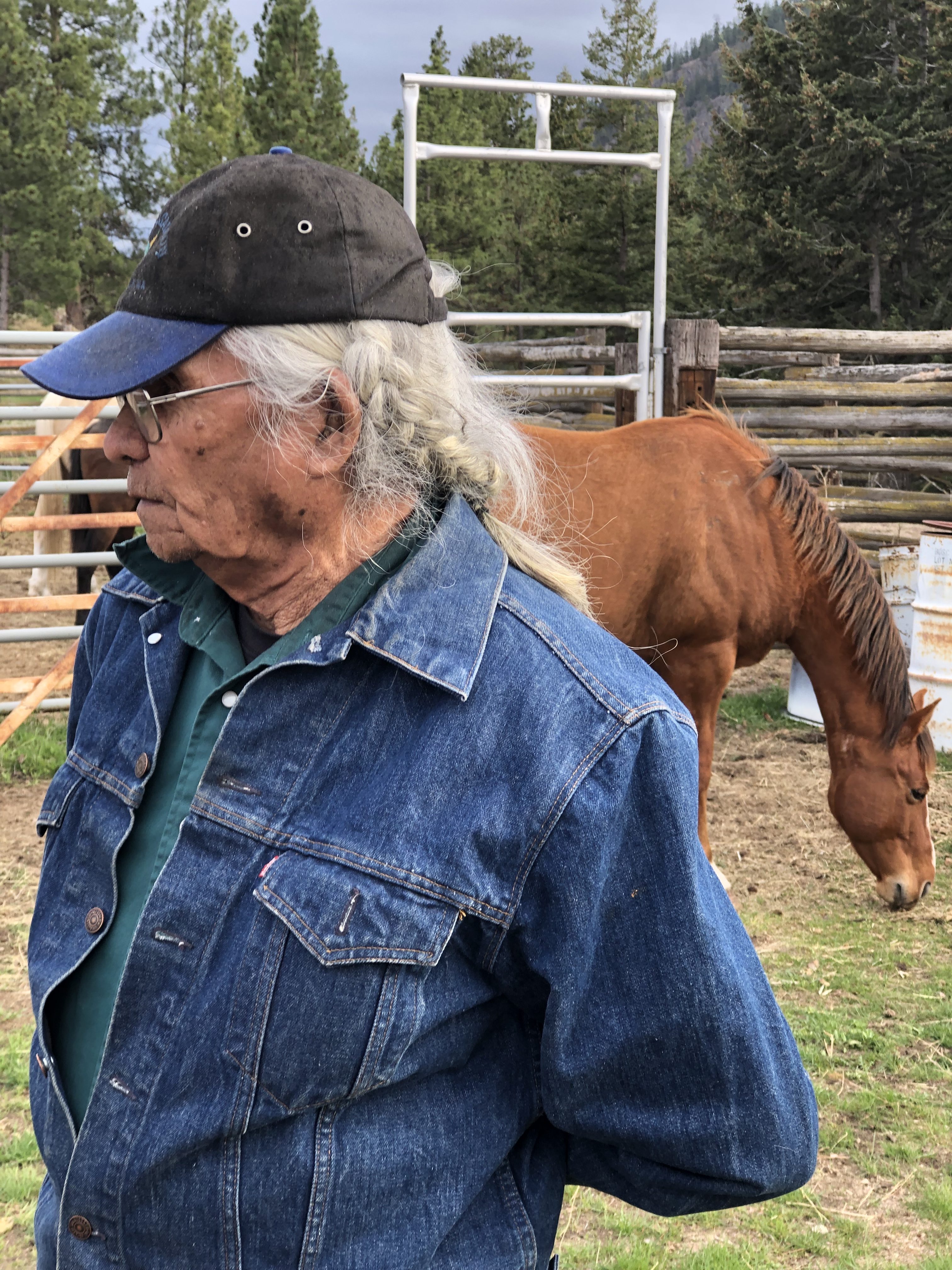Riding two wild horses from the Penticton Indian Band and training them in the Osoyoos Indian Band allowed me the opportunity to learn from the elders I met.
Aaron Stelkia, Smokey’s owner and a master horseman, was the one I spent the most amount of time with. While he taught me a lot of tricks about horses, he also helped me understand a bit about his culture and their strong connection with the horse.
“We believe horses were here before the European’ boats arrived,” Aaron told me one day while sitting in his home.
To Aaron, and many Aboriginals, the story that the horse was extinct in the Americas before the explorers arrived, does not add up. According to him, his mother Jane Stelkia, remembers stories from her ancestors about how horses had always been a part of their lives.
“My mom’s DNA traces back to Russia… when those people made the trip to America over the land bridge, we think they came with horses,” Aaron said. “When the Europeans came across some of the tribes that used horses, they wrote about how good horsemen those Indians were… how could they have learned to capture, train and ride these animals in such a short period?”
Luckily, I got the opportunity to speak to Jane Stelkia. At the age of 89, this strong indigenous woman who has been breaking horses and ranching since she was a young girl, still brands her cattle and rides.
“Ranching has been in my family for over 100 years,” she told me while we sat in her living room.
Jane went on to tell me about her people’s strong connection to the horse and what they mean to her.
“The horse means everything to us… I love these animals and it makes me proud we still use them to work the ranch today,” she said with a big smile.
The curly haired, dark skinned rancher explained how important these majestic animals have been to her family and community. But she also told me that in recent years, cowboys in the Indian Band are becoming a dying breed. I heard the same from all of the elderly people I spoke to in the area.
“There are just no more young cowboys anymore,” said Thomas Pierre, a cowboy and retired bronc rider in his ranch outside of Penticton.
Thomas, who is now in his mid 70’s, showed me the arena he built near his home. It was a place where he would allow young kids to get on his more than 100 saddle bronc horses to practice and learn how to ride.
“They just stopped coming so I sold all of the horses,” Thomas told me.
I am an eternal optimist and although at times I share Jane and Thomas’ sentiment, I tried to convince them that there were still cowboys out there… like me for instance. Hearing my story, how far I had already ridden and how far I was about to ride on this new long ride, may have given them a little hope.

